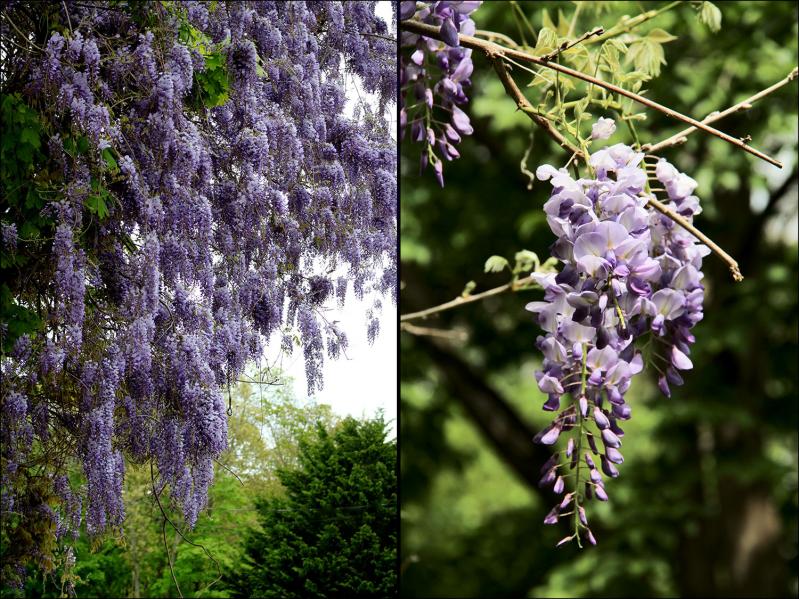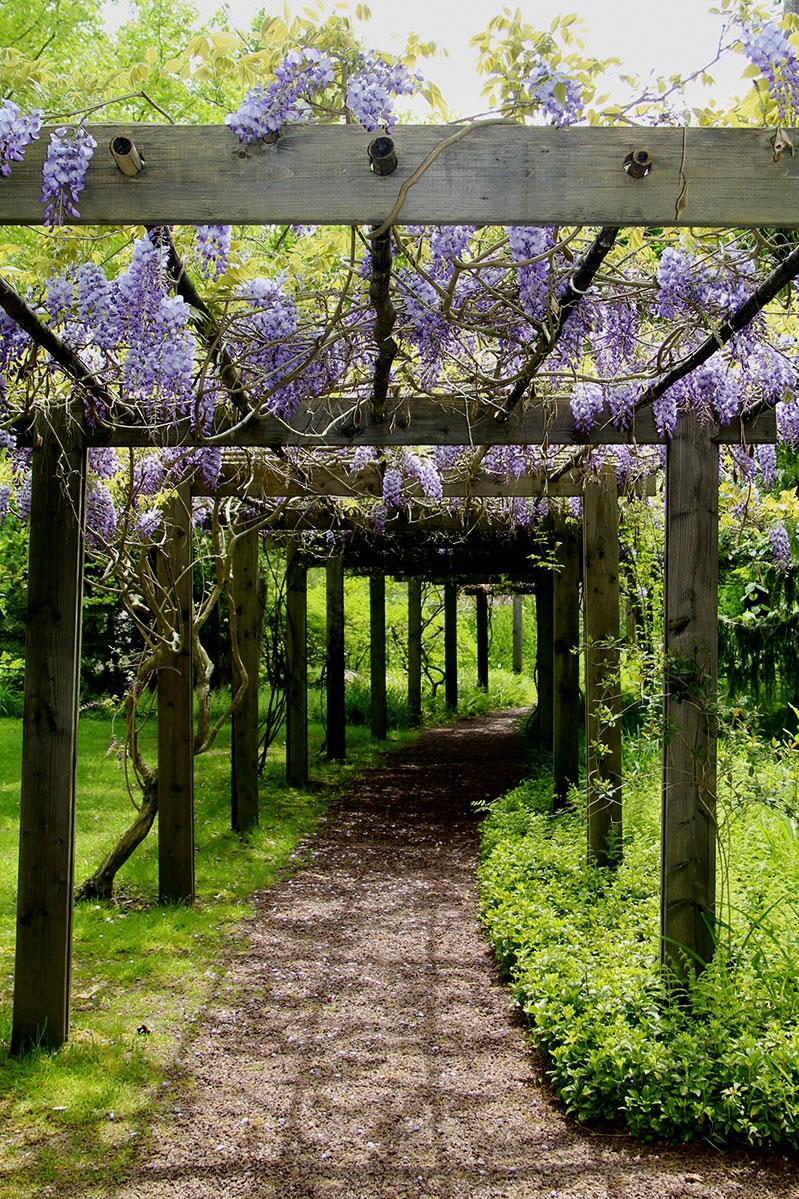In the Victorian-era school of thought known as “the Language of Flowers,” wisteria is associated with romance, beauty, and devotion, with a slightly ominous postscript referencing the plant’s twisting vines and warning of loving something a little too much, lest it be suffocated.
“It might be cliché, but when the plants are at their peak, it’s breathtaking,” Tony Piazza, a well-known horticulturist on the South Fork, said in a recent interview, speaking to the Victorian appeal of wisteria. “You see them in bloom and say, ‘Oh, my god.’ Wisteria growing over a pergola is so romantic. You can’t beat it.”
Though most of the wisteria found on the East End is not native, and some of the nonnative varieties have invasive tendencies when left to their own devices, it’s hard to argue with its beauty. It loves the fertile soils and temperate eastern Long Island climate, climbing anything and everything nearby, dropping cascading, grapelike clusters of purple, pink, and white blossoms for a fleeting two to three weeks in the spring.
Mr. Piazza, whose business, Piazza Horticultural, was recently folded into the Whitmores landscaping and nursery empire as a naturally focused specialty division, says that the native variety of wisteria offers “a lot of wildlife service.”
“There is a butterfly species that really enjoys it. Being that it’s native, it evolved in this area, and all the birds and the bees and bugs evolved together with the plant,” he said. “They rely on it for nesting habitat, and the foliage and the flowers also service certain wildlife.”
The issue, if it can be called one, is that the native wisteria isn’t as showy as the nonnative varieties are. But it’s safer to use in an East End garden or landscape.
“You can use it close to a building, whereas the non-native ones, they can get under the shingles and eaves of your house and grow into the walls,” Mr. Piazza said. “I do use the native ones on houses because they’re more dainty and easy to maintain, and not as aggressive.”
Sturdy structures like pergolas and arbors — like the ones at the Home, Sweet Home Museum in East Hampton Village — are recommended as the support structures for wisteria.
The flower was featured in the late Jack deLashmet’s 2011 book “Hamptons Gardens,” which described “decadent cascades of fragrant wisteria spilling over a stone pergola.” The Baker House 1650 in East Hampton even has a wisteria vine some 200 years old.
It’s another horticulturist named Tony — Tony Medeiros, who takes care of gardens and plants as an East Hampton Village employee — who maintains the wisteria at Home, Sweet Home. He does not speak the same Language of Flowers when it comes to the wisteria, largely because he sees the kind of maintenance it requires.
“For me, it’s more of a chore than anything. I don’t have the same feeling of nostalgia or romance,” Mr. Medeiros said. “In order to get that beauty that one sees, a lot of work goes into pruning and maintaining it. If you let it get unruly, it overtakes everything within four to six feet within a month or two.”
He visits Home, Sweet Home as many as six times over the spring and summer just for the wisteria. “Those two weeks of the bloom are showy and beautiful. Beyond that, to me, it’s maintenance. But it has to be maintained to get the beauty of it the following season.”
Mr. Madeiros advises against deliberately fertilizing wisteria, unless you want a truly out-of-control plant on your hands. “Fertilization promotes rapid growth, and you’re not going to get as many flowers. All the energy will go into new tissue like new shoots and leaves, not the flowers.”
Maria Matthiessen, who lives in Sag Harbor, can speak to the everyday appeal of wisteria in a home garden.
Her charming, immaculate, and antique-filled small house on Bayview Avenue features a secret garden at the rear. The garden could be called a pocket-size park, with bluestone slate pavers instead of grass and both a small deck, right by the kitchen door, and a huge round table in the center of the yard for outdoor tea times. There’s a “catio” enclosure, too, to allow her two cats, Prudence and Tangawizi, to go outdoors without massacring any birds.
She downsized to Sag Harbor about 10 years ago, after living for decades in a larger house with a much larger and much more elaborate garden of English roses and peonies in Sagaponack. The highlight of her more citified outdoor space in Sag Harbor is the thick canopy of wisteria that smothers the overhead arbor on the back patio, on which there also sits a second teak table for meals in warm weather.
“I planted a white wisteria because I wanted shade on my deck,” said Ms. Matthiessen, who drinks tea from her favorite blue Spode set outdoors under the wisteria arbor with family or friends, accompanied by Tate’s Cookies, several times a week when weather permits. (Unusually, there is also an overhead fan built into the arbor above, to provide a wafting breeze.)
The wisteria is very healthy, which also means it is unruly and needs to be frequently kept in its place. The original plant was put in by a professional gardener “about 15 years ago,” she estimates, before she moved full time into the house, but “a tree man cut it down by mistake and it needed replanting. It has grown enormously despite that fact.”
Ms. Matthiessen’s wisteria flowers were supposed to be white but no longer are. “The new one has reverted to the original purple flower, which was a disappointment, and also I have discovered that wisteria is a bully. The shoots rise out of my deck and send long arms to my neighbor’s property and the whole of summer I am tugging at the deck and regretting that I ever thought to plant the wisteria there.”
Still, guests agree that the wisteria is gorgeous, and a lovelier “ceiling” for this outdoor room could not be imagined.


